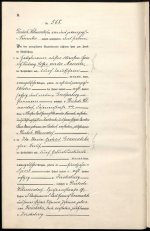Björn Bergenholtz
(former alias "Calalp")

Updated Summary, ver. 3.0 ... (or something to while in quarantine).
Since this thread clearly has lost most of its pace, and lately has drifted away from its original topic/purpose (i.e. James's mission to find and explain the most unknown of unknown scientific names) ...
Also as some of the latest topics in this thread have been pure side-tracks (exept for the most recent posts regarding annae), lately we've (suddenly) been dealing with Herr Mell, and "his" birds, and before that with a/some odd Hummingbird/s commemorating an all unknown Adèle (as in the French name L'Orotrochile d'Adèle), or Adela (as in "Adela's Hill-star", i.e. John Gould's English name, from 1849), or even a plausible Adelaïde (as suggested by Martin) for adela ... and then an Estelle (as in estella), sigh! * ... neither one included in James's original list/s (the very reason/s for this thread).
* ... neither one included in James's original list/s (the very reason/s for this thread).
Thereby; as our dear HBW Alive Key now has been shut down (hopefully to appear elsewhere, soon), thus as of now unreachable in the many links in this thread (as well as in numerous others, too bad) ... here's a third Update/Summary of all the remaining eponyms and other epithets (see the attached PDF), with their resp. entries quoted from the Key [as per 9th of May 2020, shortly before the Key was closed down]. Simply to keep the kettle boiling.
See it as something to do, to fiddle with, to ponder over, while in quarantine, it's a list that (certainly), will keep everyone busy (if dealt with, of course), for quite a while, until the lock-down is over, or (at least) until the Key is back again (in the BoW version).
Note that here are still many, several names (about 90!) still missing an adequate explanation, some only in minor parts, others are still all unexplained. Take your pick.
I'm pretty convinced that James will appreciate any progress achieved, on any of them.
If anyone choose to try, on either one: Good luck!
And Stay (corona) safe.
Björn
PS. James, any additional ones/names/oddities, added to your list/s, since December last?
_____________________________________________________________
*Re. the etymology of pamela, estella and adela, see the fairly recent Paper (from February 2020):
Authorship within the Synopsis Avium: a correction by Edward C. Dickinson & Martin Schneider
(i.e. our own "Taphrospilus"!), in Zoological Bibliography 5 (11): 413–415, here (see foot-note/s, on p.414).
If Adèle/Adela alt. Adelaide/Adelaïde is correct, or not, is way, way beyond my understanding.
If dealt with onwards, please put it in a thread of its/their own. Simply to keep this one in order.
Since this thread clearly has lost most of its pace, and lately has drifted away from its original topic/purpose (i.e. James's mission to find and explain the most unknown of unknown scientific names) ...
Also as some of the latest topics in this thread have been pure side-tracks (exept for the most recent posts regarding annae), lately we've (suddenly) been dealing with Herr Mell, and "his" birds, and before that with a/some odd Hummingbird/s commemorating an all unknown Adèle (as in the French name L'Orotrochile d'Adèle), or Adela (as in "Adela's Hill-star", i.e. John Gould's English name, from 1849), or even a plausible Adelaïde (as suggested by Martin) for adela ... and then an Estelle (as in estella), sigh!
Thereby; as our dear HBW Alive Key now has been shut down (hopefully to appear elsewhere, soon), thus as of now unreachable in the many links in this thread (as well as in numerous others, too bad) ... here's a third Update/Summary of all the remaining eponyms and other epithets (see the attached PDF), with their resp. entries quoted from the Key [as per 9th of May 2020, shortly before the Key was closed down]. Simply to keep the kettle boiling.
See it as something to do, to fiddle with, to ponder over, while in quarantine, it's a list that (certainly), will keep everyone busy (if dealt with, of course), for quite a while, until the lock-down is over, or (at least) until the Key is back again (in the BoW version).
Note that here are still many, several names (about 90!) still missing an adequate explanation, some only in minor parts, others are still all unexplained. Take your pick.
I'm pretty convinced that James will appreciate any progress achieved, on any of them.
If anyone choose to try, on either one: Good luck!
And Stay (corona) safe.
Björn
PS. James, any additional ones/names/oddities, added to your list/s, since December last?
_____________________________________________________________
*Re. the etymology of pamela, estella and adela, see the fairly recent Paper (from February 2020):
Authorship within the Synopsis Avium: a correction by Edward C. Dickinson & Martin Schneider
(i.e. our own "Taphrospilus"!), in Zoological Bibliography 5 (11): 413–415, here (see foot-note/s, on p.414).
If Adèle/Adela alt. Adelaide/Adelaïde is correct, or not, is way, way beyond my understanding.
If dealt with onwards, please put it in a thread of its/their own. Simply to keep this one in order.
Attachments
Last edited:






